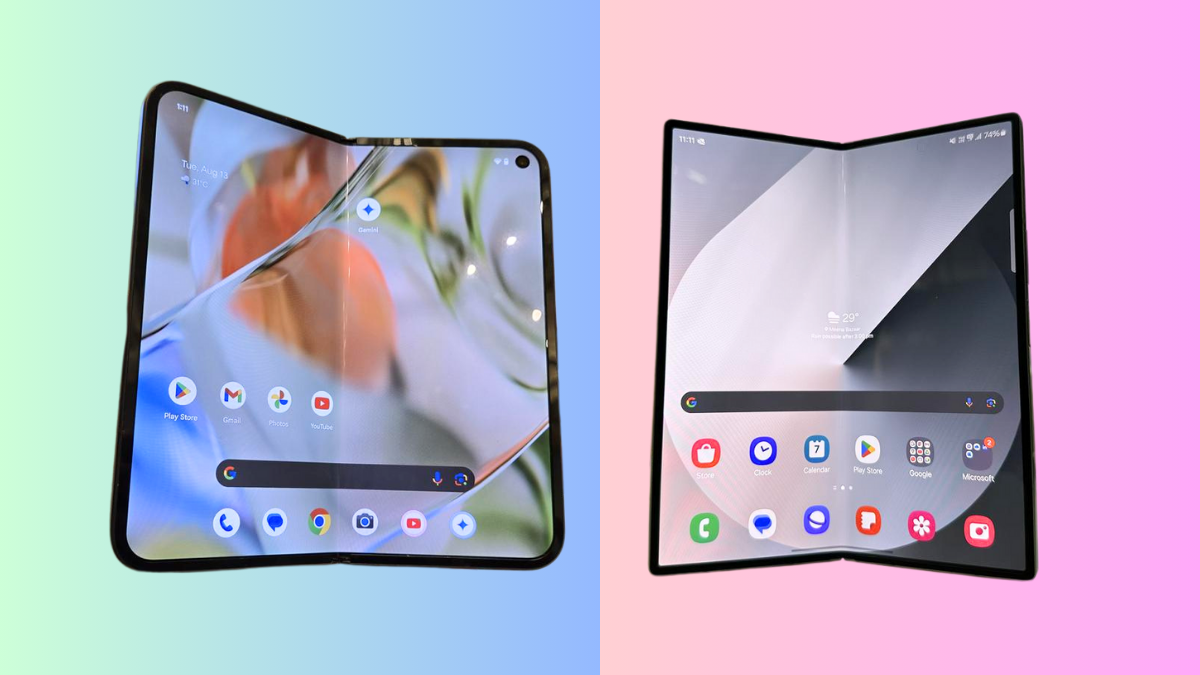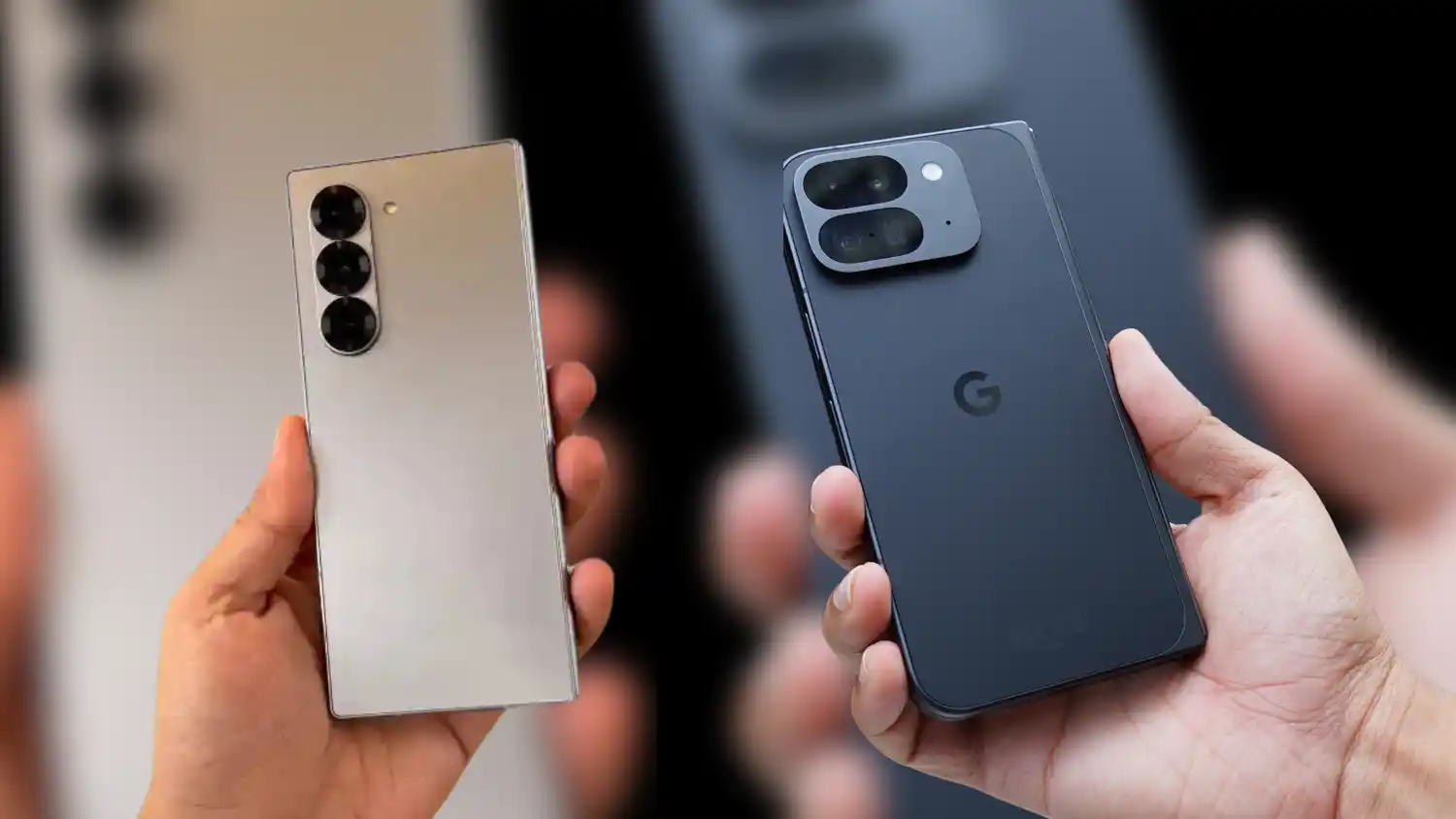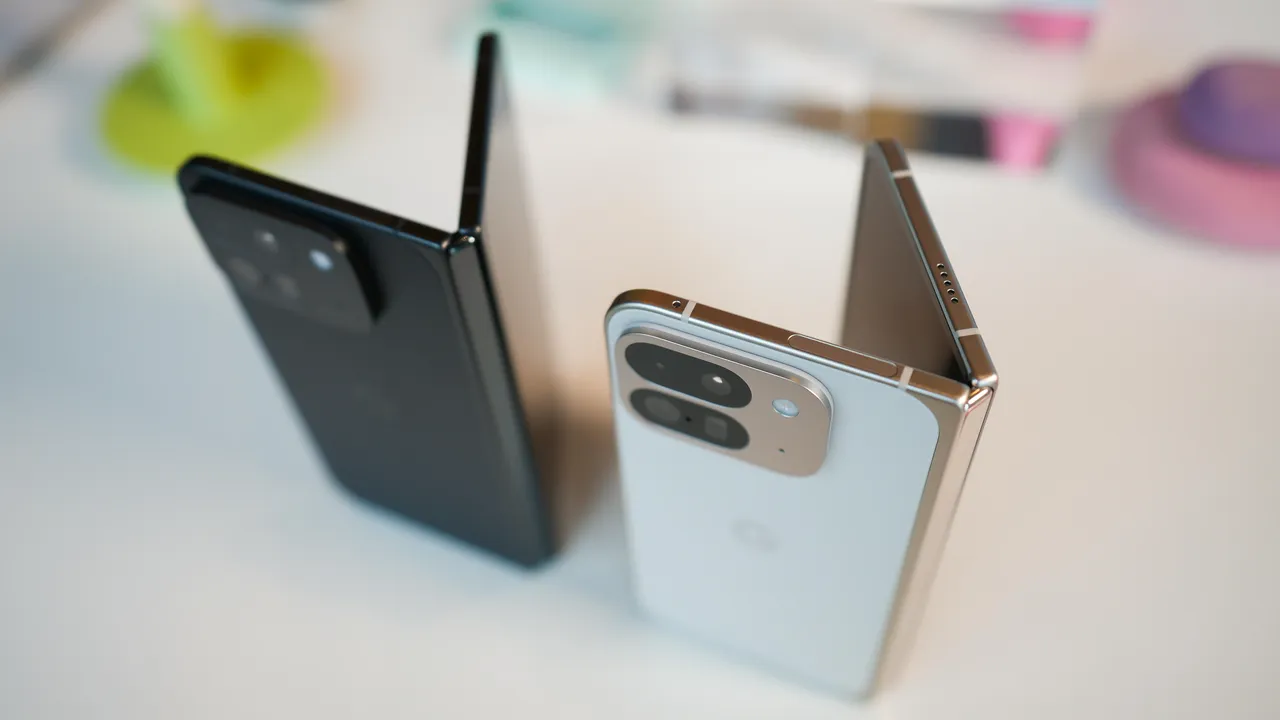The foldable phone market continues to heat up, with Samsung and Google battling it out with their flagship foldables: the Samsung Galaxy Z Fold 6 and the Google Pixel 9 Pro Fold. Three months after its release, the Galaxy Z Fold 6 still stands tall, offering some significant advantages over its competitors, especially the Pixel 9 Pro Fold. Let’s dive into how this innovative device performs months after launch and why it could be the better choice for those looking for a foldable phone experience.

A Foldable Built Around Flexibility
While both devices bring unique designs and capabilities, the Galaxy Z Fold 6 stands out for its mastery of the foldable format. Samsung’s emphasis on flexibility, particularly with its software, sets the Fold 6 apart from the Pixel 9 Pro Fold. One of the most notable advantages? Flex Mode. Samsung has mastered this feature, allowing apps to adapt and seamlessly transition when the device is partially folded, transforming the user experience.
While Google’s Tabletop Mode on the Pixel 9 Pro Fold works well for some apps, like YouTube and the camera, the experience falters with other apps that simply stretch awkwardly across the screen. In contrast, Samsung’s Z Fold 6 allows any app to utilize Flex Mode. Whether it’s splitting the screen for multitasking or using the bottom half as a touchpad, Samsung offers a polished, adaptable interface that Google struggles to match.
Samsung’s Display Brilliance
When it comes to foldable phones, the screen is the star of the show. The Galaxy Z Fold 6 boasts a 7.6-inch AMOLED internal display with a refresh rate of 1-120Hz, offering a rich, vibrant viewing experience. This, coupled with Samsung’s legacy of bright and sharp displays, makes it ideal for consuming media, gaming, or multitasking.
While Google’s Pixel 9 Pro Fold has an even larger 8-inch OLED internal display, it doesn’t always translate into a superior experience. Indoors, the Z Fold 6’s screen shines brighter than the Pixel, making everyday use more comfortable, especially at lower brightness settings. Though both devices hold up in direct sunlight, Samsung once again takes the lead with a display that truly impresses in most lighting conditions.
Long-Lasting Battery for a Foldable
Battery life has often been a concern for foldable phones, given their larger screens and demanding use cases. Fortunately, the Galaxy Z Fold 6 performs admirably in this area. After running a three-hour video streaming test at full brightness, the Galaxy Z Fold 6’s battery dropped to 82%, outperforming Google’s Pixel 9 Pro Fold, which saw its battery drop to 76% in the same test.

While non-folding phones like the Galaxy S24 Ultra still have an edge in battery performance, the Z Fold 6 holds its own, especially when you consider the large screen and extensive multitasking capabilities it offers. This balance of performance and battery longevity makes it a powerful contender in the foldable market.
Camera Showdown: Samsung Holds its Own, But Google Leads in Zoom
The Galaxy Z Fold 6 is equipped with a versatile 50-megapixel main camera, a 12-megapixel ultrawide, and a 10-megapixel telephoto lens. These specifications put it in direct competition with the Pixel 9 Pro Fold, which offers a 48-megapixel main camera alongside 10.5-megapixel ultrawide and 10.8-megapixel telephoto lenses.
“When it comes to zoom photography, Google edges ahead. Photos taken at 20x zoom on the Pixel 9 Pro Fold show sharper details with less noise, particularly in still life shots.”
For example, when zooming in on intricate architecture or nature scenes, the Pixel 9 Pro Fold tends to produce clearer, crisper images.
However, for portrait shots, Samsung’s camera shines. Photos of people, whether taken during the day or at night, often look more vibrant and lively when shot on the Galaxy Z Fold 6. While Google’s camera tends to produce more natural tones, some users might prefer Samsung’s slight color pop, which gives portraits an appealing warmth and energy.
The AI Factor: Useful Features or Gimmicks?
Samsung introduced a suite of AI-driven features with the Galaxy Z Fold 6, many of which initially seemed exciting but have since lost their luster. Features like Portrait Studio (for creating AI-generated selfies) and Sketch to Image (which turns rough drawings into polished images) are undeniably fun to play around with but are not game-changers for daily use.
That said, not all of Samsung’s AI features have faded into the background. Tools like Circle to Search, which allows users to search by simply circling an object on their screen, offer a glimpse of how AI could enhance smartphone experiences in the future. Samsung also deserves credit for its privacy options, allowing users to disable cloud-based processing for these features. This balances the power of AI with a user’s desire for privacy, providing peace of mind without sacrificing too much functionality.
Design Showdown: Elegance vs. Practicality
Design is subjective, but when comparing the Galaxy Z Fold 6 and the Pixel 9 Pro Fold, there are notable differences. Google’s foldable has a wider cover screen, which makes it feel more like a standard phone when closed. This wider design provides more room for using apps and performing tasks without having to open the phone fully.
In contrast, Samsung’s cover screen is narrower, which some might find less comfortable. However, it may be more manageable for users with smaller hands, making it easier to handle as a phone in its closed form. Moreover, when unfolded, Google’s device lies flatter and looks sleeker, but both devices still reveal a noticeable crease in the display—an inevitable compromise for foldable technology at this point.
Pricing: Is the Z Fold 6 Worth the Extra Cost?
At $1,900 for the Galaxy Z Fold 6 versus $1,799 for the Pixel 9 Pro Fold, these phones are anything but budget-friendly. The real question is whether the Z Fold 6 justifies its higher price tag. For users who will make the most of Flex Mode, prefer Samsung’s display technology, and appreciate its multitasking capabilities, the extra $100 might be well worth it. However, if the wider cover screen and Google’s superior zoom photography appeal to you, the Pixel 9 Pro Fold could be a smarter investment.

In the battle between the Samsung Galaxy Z Fold 6 and the Google Pixel 9 Pro Fold, both devices have their strengths and weaknesses. Samsung excels in its handling of foldable-specific software, display brightness, and portrait photography. Meanwhile, Google’s Pixel 9 Pro Fold shines with its zoom capabilities, wider cover screen, and sleeker design.
Ultimately, your decision will likely hinge on what matters most to you. If you value multitasking, bright displays, and adaptable software, the Galaxy Z Fold 6 is your best bet. On the other hand, if you prioritize camera performance, especially zoom photography, and prefer a wider screen for everyday tasks, the Pixel 9 Pro Fold will suit your needs better.
In either case, you’ll be getting a cutting-edge foldable experience, but at a premium price. As Samsung continues to refine its AI and foldable tech, it’s clear that the Galaxy Z Fold 6 is an investment in the future of smartphones. Whether or not that future is worth the price is something only you can decide.









